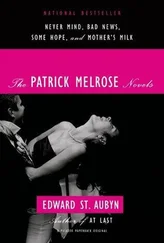This allows her to scheme and meddle, it allows her to amuse the reader, but it allows her also to stand in great opposition to Catherine Sloper, despite her efforts to be helpful and supportive. Her presence in the book allows Catherine to be more alone, allows her to become herself with greater force and conviction, allows the reader to see Catherine more clearly, enter her spirit more intensely. Catherine knows how to feel, and the novel is an exploration and a dramatization of this knowledge and these feelings. As the short novel proceeds, what Catherine feels becomes more solid and more complex; she becomes almost heroic in her steadfast solitude, her single-mindedness, her stubbornness. James has taken not only the figure of Fanny Price, the young girl as dull and silent orphan from Mansfield Park , but also the orphan from folk tales, and he has given her a scheming aunt, a loathsome father and a pent-up sexuality. He has also offered her silence, the silence that only the novel can exploit with exact plenitude as it takes over her yearning spirit and allows her motives a painful complexity. Part of Catherine’s strange nobility comes from the fact that she is alone in the world, her mother is absent, her aunt is a fool.
In The Portrait of a Lady , written soon afterwards, Mrs Touchett, Isabel’s aunt,
was a plain-faced old woman, without graces and without any great elegance, but with an enormous respect for her own motives… She was not fond of the English style of life, and had three or four reasons for it to which she currently alluded; they bore upon minor points of that ancient order, but for Mrs Touchett they amply justified nonresidence. She detested bread sauce, which, as she said, looked like a poultice and tasted like soap; she objected to the consumption of beer by her maid-servants; and she affirmed that the British laundress… was not a mistress of her art.
Thus in his introduction to both Mrs Touchett and Mrs Penniman, James can use a style that one could describe as self-amused. The sentences chosen to describe both aunts, as indeed the very names chosen for these personages, must have been enjoyable to compose. They set a tone, but oddly enough, it is not a tone for the novel itself, which will have a different tone and texture. Rather, they alert the reader that the heroine who will suffer in the book will be alone in her suffering, it will be done in silence, with no terms for it that belong to any woman of the previous generation. These are novels that project the individual as alone in the world, her singleness a metaphor perhaps for how the world is moving and developing, and with echoes of the space in which capital must be acquired and how it must grow; but these non-fictional issues are side-shows, the individual is alone in these novels more than anything else as a way of allowing the novels themselves to breathe and thrive, to live dynamically. It is for this that the young women Catherine Sloper and Isabel Archer will have to be removed from the control and the cocoon of family. What they do, what they decide, how they live, will have a stark drama; nothing will be inevitable or part of a communal system of feeling, something passed on to generations. The idea of generation in these novels is not something organic and biological; generation occurs as energy in the individual, self-made conscience, it happens there alone.
The Portrait of a Lady exudes more energy than Washington Square not only because its heroine fills a larger space spiritually and intellectually but for two other reasons. The first is that Isabel’s solitude is not only denser and richer, but it is also given more dramatic weight. In the Preface he wrote more than twenty years later James analysed what he had done with Isabel Archer’s ‘inward life’, when he referred to that scene where, by allowing her mind to circle and re-circle, he brought Isabel and the reader to a realization of what has been hidden from both up to then. ‘And I cannot think,’ James wrote,
of a more consistent application of that ideal [of making the inward life of a character as dramatic as any set of external events] unless it be in the long statement, just beyond the middle of the book, of my young woman’s extraordinary meditative vigil on the occasion that was to become for her such a landmark. Reduced to its essence, it is but a vigil of searching criticism; but it throws the action further forward than twenty ‘incidents’ might have done. It was designed to have all the vivacity of incident and all the economy of picture. She sits up, by her dying fire, far into the night… it all goes on without her being approached by another person and without her leaving her chair. It is obviously the best thing in the book…
The other scene from the book that James mentions in the Preface as also a key to the book’s dynamic is the scene in which
Isabel, coming into the drawing-room at Gardencourt, coming in from a wet walk or whatever, that rainy afternoon, finds Madame Merle in possession of the place, Madame Merle seated, all absorbed but all serene, at the piano, and deeply recognises, in the striking of such an hour, in the presence there, among the gathering shades of this personage, of whom a moment before she had never so much as heard, a turning-point in her life.
Madame Merle is presented to both Isabel and the reader as a surrogate aunt for Isabel, who will take the place of Mrs Touchett or augment her effort to direct Isabel towards her destiny. Isabel will be free, of course, to resist such direction, being less brittle and selfish than Mrs Touchett and less worldly and sociable than Madame Merle. What James then does is allow the character of Madame Merle to shift in the book, or move from being an aunt to being a rival. He sexualizes an aunt, and this act gives The Portrait of a Lady its power. He radically destabilizes the category of aunt, moves Madame Merle from being someone who protects Isabel, who stands in for her mother without having a mother’s control, to being someone who seeks to damage her, defeat her. He makes Isabel realize this by herself, through her own powers, thus making her solitude a sharp weapon, a tactic almost, as much as a vulnerable condition.
But James also wishes to dramatize, to take what happens in the secret chambers of the self, the mind at work in silence as registered by the novelist in sentences, and move this into dialogue, open drama. The scene where Madame Merle confronts Isabel, asking why Lord Warburton has not continued his interest in Pansy, the daughter of Isabel’s husband, is masterly in its stagecraft, its creation of dramatic illusion, its understanding of the sheer power in a novel of playing it as though there were two actresses on the page, rather than a silent novelist communicating with a silent reader. When Madame Merle overplays her hand by asking Isabel to ‘let us have him’, to let her and Osmond and Pansy have Lord Warburton, ‘Madame Merle had proceeded very deliberately,’ James writes:
watching her companion and apparently thinking she could proceed safely. As she went on Isabel grew pale; she clasped her hands more tightly in her lap. It was not that her visitor had at last thought it was the right time to be insolent; for this was not what was most apparent. It was a worse horror than that. ‘Who are you — what are you?’ Isabel murmured. ‘What have you to do with my husband?’ It was strange that for the moment she drew as near to him as if she had loved him. ‘Ah then, you take it heroically! I’m very sorry. Don’t think, however, that I shall do so.’ ‘What have you to do with me?’ Isabel went on. Madame Merle slowly got up, stroking her muff, but not removing her eyes from Isabel’s face. ‘Everything!’ she answered.
In that moment a transformation of an exquisite kind takes place in the book as the older woman removes her guise as aunt and puts on the mask of rival. There is another moment worthy of attention when shapes change, when figures who played one role move into another, thus adding to the texture of the book. It is in the very last chapter after the death of Ralph Touchett when Isabel embraces her aunt:
Читать дальше












